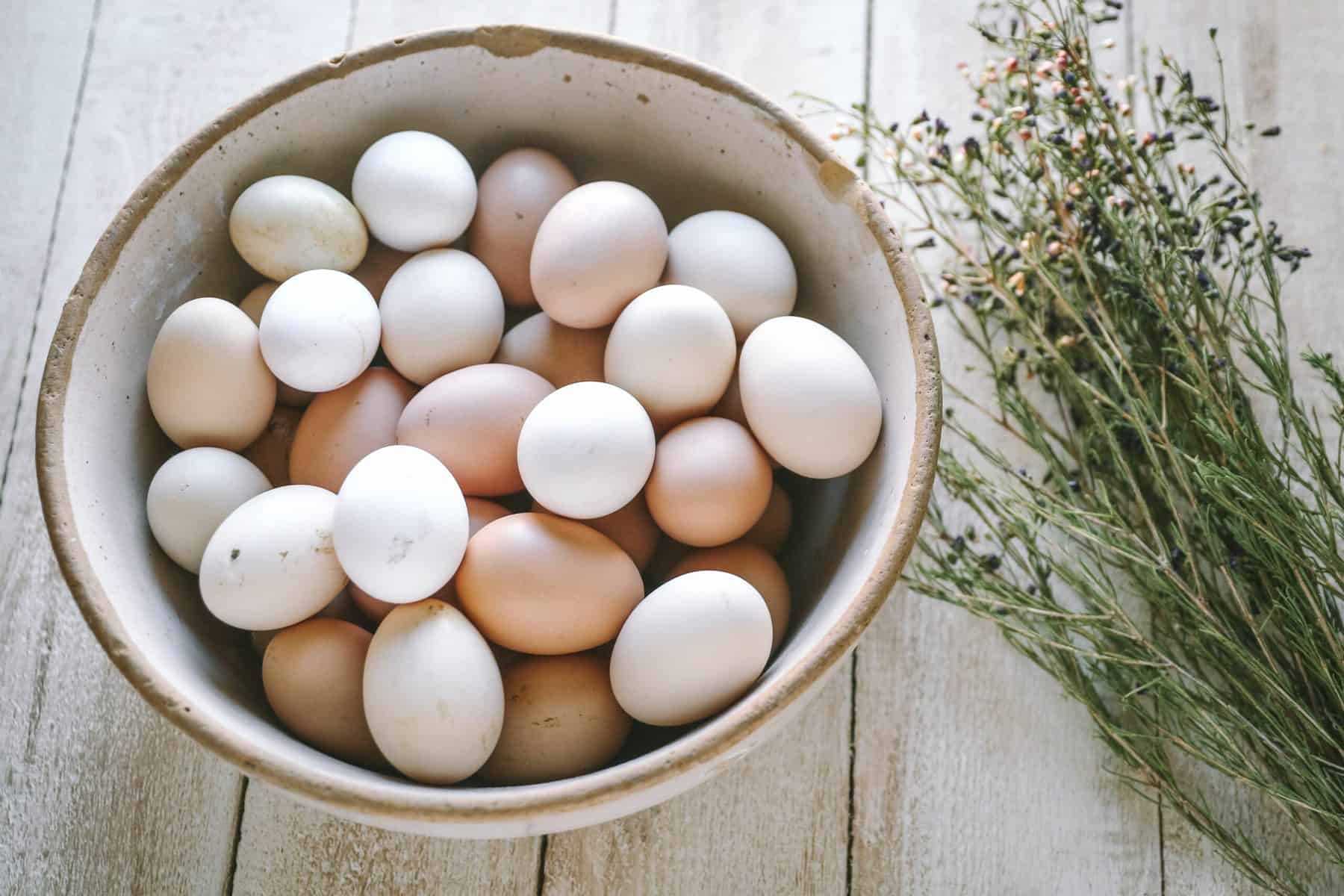
I have talked about how to be more prepared and resilient in terms of growing your own meats, milk, eggs, and vegetables.
But what about the things that you can’t grow yourself on your homestead or in your backyard? I’m talking, of course, about how to keep a well-stock pantry, full of flour, bulk goods, etc.
Keeping a well-stocked pantry and buying in bulk is a major key to your family’s food security. And keep in mind that bulk food buying doesn’t just have to be for your long-term storage; it can also help you with your working pantry as well.
Making fewer trips to the grocery store by saving time and money through bulk buying and storing is, in my opinion, a great thing for all modern homesteaders to try and accomplish. You don’t have to live on a farm in order to have bulk foods stored up in the home.
I recently had the privilege of interviewing a bulk food storage expert on my podcast. Let me just say, I was thrilled and excited going into the interview because there have been SO many questions about bulk food storage that I could never really answer.
You can listen to my interview with bulk food storage expert Jessica, from Three Rivers Homestead on my Old-Fashioned On Purpose podcast (it’s available wherever you like to listen to your podcasts). You can also take a listen to it right here:
However, I also pulled out some of the important questions from the episode in case you prefer to read instead of listen.

What is Bulk Buying Food Storage?
When bulk buying, there are two categories to focus on: your working pantry and your long-term food storage.
A working pantry is where you will keep the things that you use weekly or daily. The items in your working pantry will be cycled through, and they might not be in large quantities or have as long of a shelf life.
Long–term bulk food storage are the items that you are storing away for emergencies or food shortages (I don’t think any of us will ever forget the great Toilet Paper Shortage and Yeast Shortage of 2020…). Long-term bulk items are usually in larger quantities and can be stored out of sight for long periods of time.
What are the Basic Essentials in a Bulk Food Storage Pantry?
Modern food culture has become about specialized foods that are premade and prepackaged. However, our ancestors created food and meals from basic ingredients and that is what this type of bulk food storage is all about. Getting back to storing and using basic ingredients and whole foods.
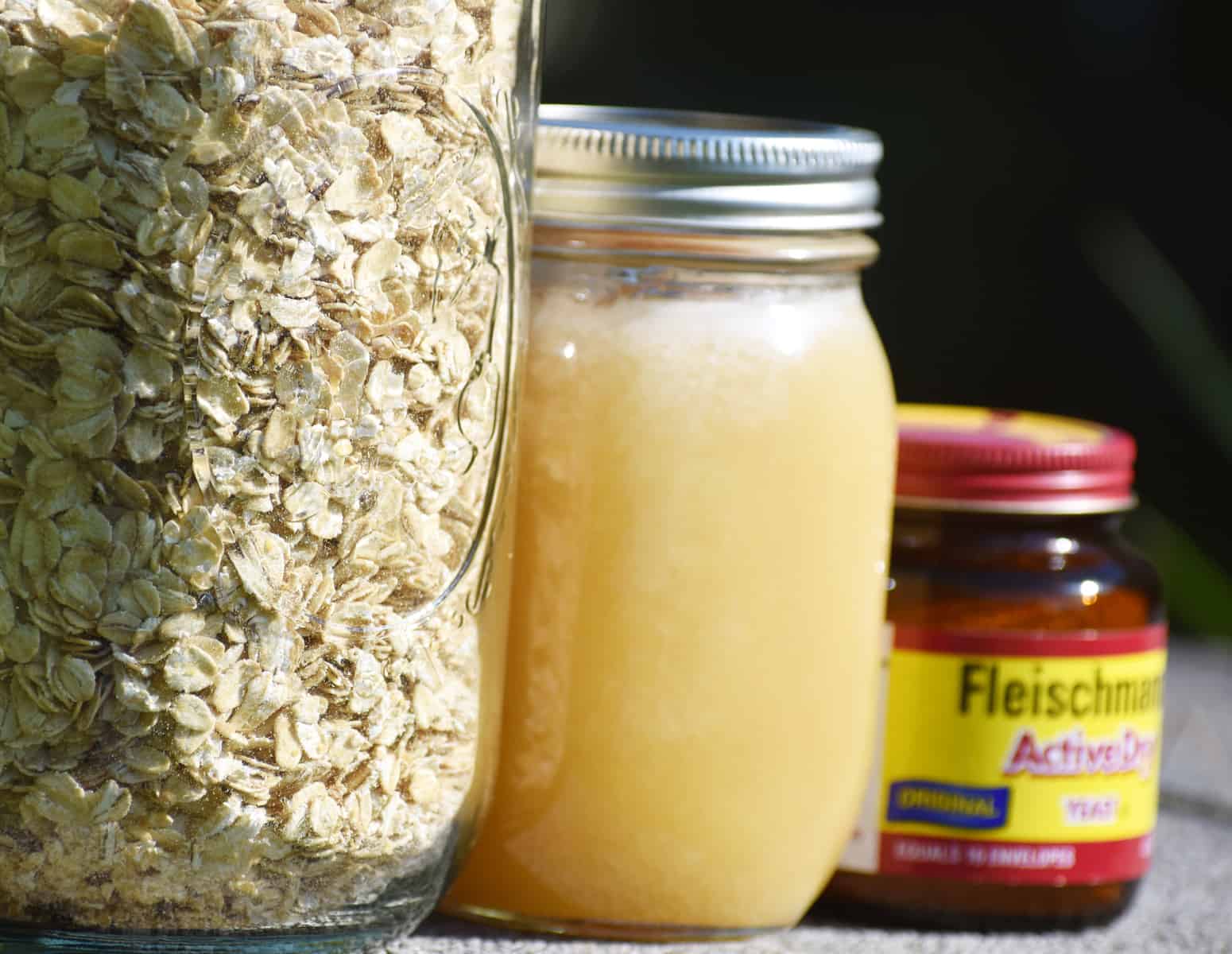
A basic essential bulk storage pantry should focus on all the things that you will not be able to grow or produce yourself. This can include grains, sweeteners, leavening agents, and plant-based proteins. All these basic ingredients are extremely versatile and can be used to create any meal.
When you are looking to buy in bulk for long-term storage, it is best to buy items in their rawest whole forms. The whole versions store better than their refined counterparts, for example, buy wheat berries instead of flour, and dry corn instead of cornmeal.
Bulk Food Storage Essentials:
Grains:
- Wheat Berries (This is the Hard White Wheat Berries I like to get, and this is the Soft White Wheat Berries I get for pastries)
- Corn
- Oats
- Rice
When you are using whole forms of grain like wheat berries or corn, a grain mill will be required to transform them into flour or cornmeal.
Sweeteners:
- Honey (I love this raw honey)
- Molasses
- Maple Syrup (this is one of my favorite maple syrup companies)
Baking:
- Yeast
- Baking Soda
- Baking Powder
- Salt (I LOVE Redmond’s Sea Salt)
Protein:
- Lentils
- Dry Beans
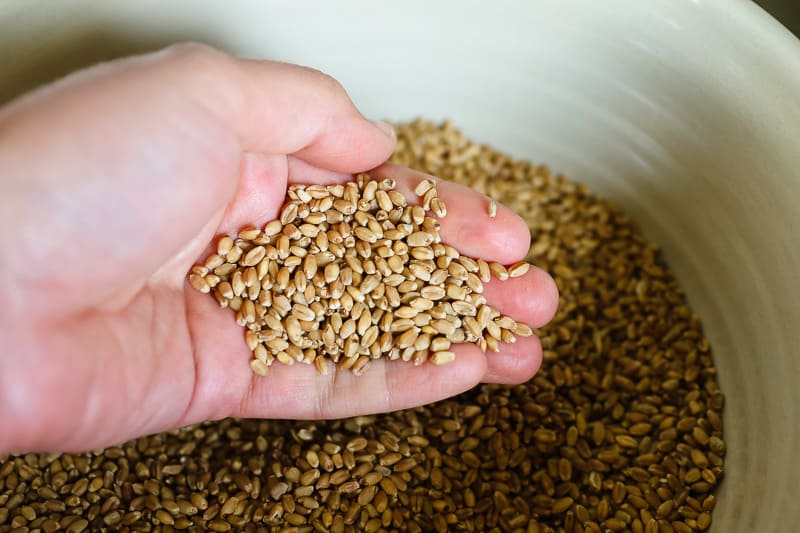
What are Wheat Berries?
When it comes to storing grain, people tend to have a lot of questions, especially about wheatberries. Wheat berries are the whole form of all wheat products. This basic form of wheat is ground down or refined into other forms, an example of this is when wheat berries are ground in a mill to create flour for baking bread.
If you are interested in learning more about grain mills and grinding your own flour take a look at my article on How to Use a Grain Mill to Make Your Own Flour From Wheat Berries
Hard & Soft Wheat Berries
There are two main categories that wheat berries fall into, you can either have hard wheat or soft wheat.
Hard wheat berries are generally used for making bread because they have a higher gluten content. Soft wheat berries are used to make things that require a fluffier texter like biscuits or pastries. Both types can come in a white or red variety. Red wheat berries are darker in color and have a stronger flavor. White wheat berries are lighter in color and have a milder flavor that does not overpower other ingredient flavors when used.
Check out my wheat berry article for tons of extra details on the different types of wheat berries and how to grind them and use them.
What Foods Should Not be Bought in Bulk?
Foods that are high in oils should not be bought in bulk quantities. This includes brown rice, nuts, and ground flours. Brown rice has a higher oil content than white rice, nuts just have lots of oils, and once wheat berries are ground down the oil starts to go into the flour.
If you would like to store foods like this, do it in smaller quantities and for less amount of time.
What Locations Are Best for Long -Term Bulk Food Storage?
A root cellar is an ideal location for any long-term storage, but not many modern homes have been equipped with them. Your storage location should be dark and cool with a consistent temperature. The ideal temperature range should be between 40- and 70-degrees Fahrenheit.
Long-term food storage doesn’t have to be anything fancy, it just needs to meet the light, moisture, and temperature requirements. If you are not sure what storage space you have, look at 13 Root Cellar Alternatives and Top Tips For Storing Vegetables Without a Root Cellar to get some different ideas.
Different Bulk Long-Term Storage Locations:
- Closet
- Basement
- Outbuildings
- Crawl Spaces
What Containers Should Be Used for Bulk Food Storage?
When deciding what containers to use for your bulk food supplies, you must know if these items are going to be in your working pantry or long-term storage. A working pantry will have different sizes and ways to store items compared to long-term storage.
Depending on your needs a working pantry can have food stored in different-sized food grade buckets, glass jars, or the original containers. Long-term bulk storage will almost always be stored in large food-grade 5-gallon buckets.
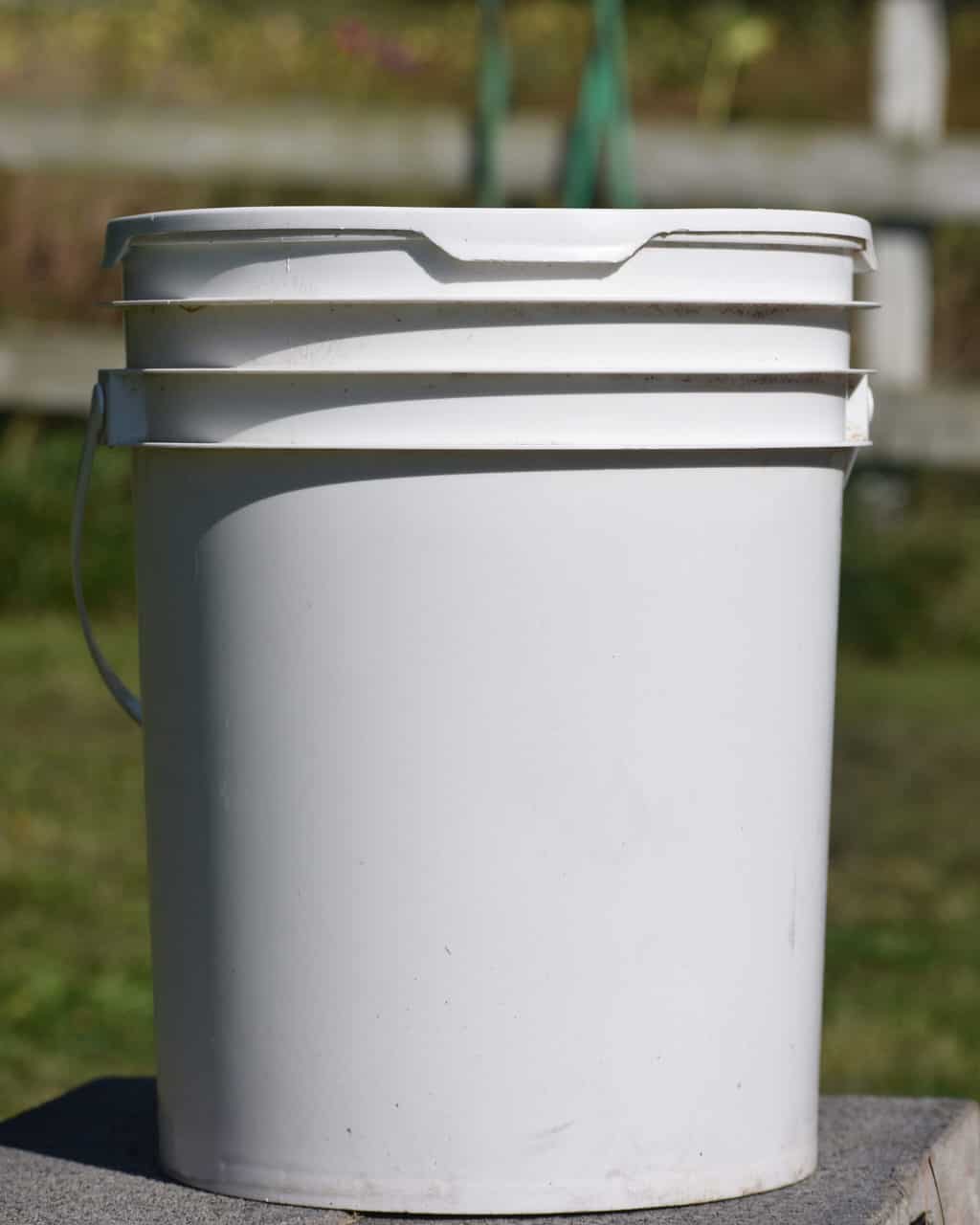
Food grade buckets that are used for long-term storage should not be used alone; your grains should be placed in a mylar bag then stored in the 5-gallon bucket. In the pantry, because you are in and out of your bucket all the time a bag is not necessary, but you may want to consider a gamma lid or a Smart Seal Lid (I LOVE these Smart Seal Lids from True Leaf Market).
What is a Gamma Lid aka Smart Seal Lid?
A gamma lid is a special lid that creates easier access to your food stores by screwing on and off. You can often find them at local hardware stores, but sometimes they will be sold at bulk food stores as well. Some bulk food suppliers will offer these lids as an option when you purchase your bulk food in a 5-gallon bucket.
I love these Smart Seal Lids from True Leaf Market. They come in different colors, which is not only fun but also great for being super organized (example: you can use different colors for different types of food).
Where to Find Food Grade Buckets for Bulk Storage?
Food grade buckets are pretty easy to find at a local hardware store. If you would like to find them a little cheaper you can always ask bakeries or restaurants if they have any they would like to be rid of.
You can also purchase Food Grade Buckets from True Leaf Market if you want to be more confident in the source of your buckets.
Why is Oxygen an Important Bulk Food Storage Factor?
Oxygen is an important factor when it comes to the freshness of long-term bulk food that has been stored. It is not as important for things in your working pantry that will be opened more frequently.
An important tool that can help lengthen the shelf life of your long-term bulk food items is an oxygen absorber. When an oxygen absorber is used, foods that would normally go bad in a year will now last approximately 10 years. An important rule to remember when using an oxygen absorber is that it can not be placed directly in a plastic food-grade bucket.
Your long-term bulk food and oxygen absorber should be placed in a mylar bag, then put into your food grade bucket. Plastic will leech oxygen through it, so placing the oxygen absorber directly into your bucket will cause it to compress.
- I get these oxygen absorbers from True Leaf Market
- I love these mylar bags from Lehman’s store.
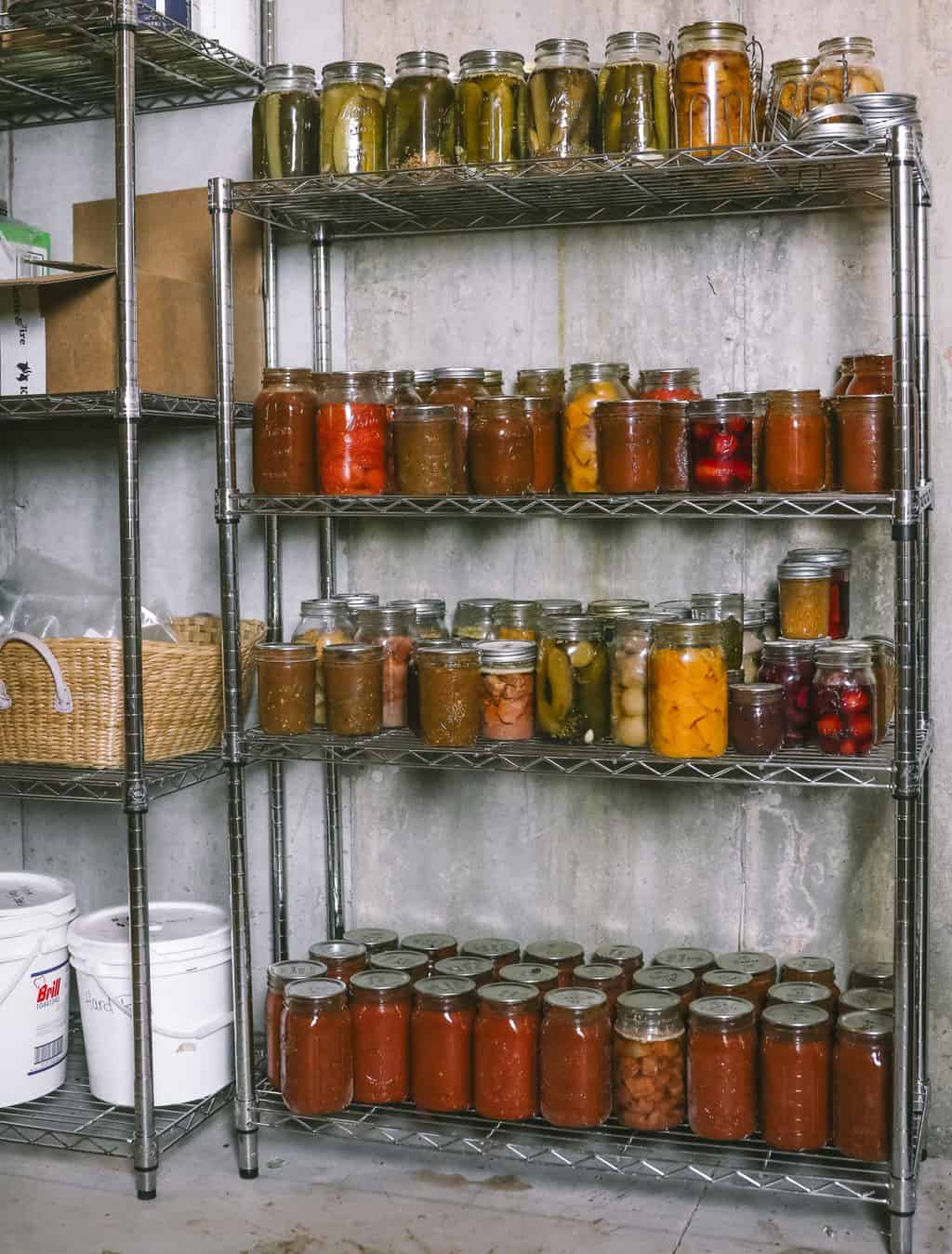
When Should You Replenish Your Food Stores?
Storing bulk food will do you no good if you don’t go through what you have and let it go bad. Once a year, it is a good idea to go through everything that you have, try to use your stored up grains, and move the supply around.
One way that has been suggested to me in the past was a “shop your pantry challenge”. This is when you do not go grocery shopping and use only what is in your working pantry. The idea is that once your challenge is over, you will be able to move your long-term items into your working pantry and replenish your long-term food storage.
My best tips for you here is to be intentional and get creative with the things that you have; and these types of challenges can help you do just that. You will be forced to try new things and look up new recipes, and you never know what you will find or like along the way.
Where to Get the Best Deals on Bulk Food Items?
There are a few options when you are looking to buy your bulk food storage items. There are food co-ops like Azure Standard. Azure Standard is a very well-known food co-op where you can buy in bulk, they can ship items to you for a fee or you can find a drop-off site near you. I LOVE using Azure Standard for my bulk grains, beans, and other pantry staples.
Bulk food stores are an anther option and Amish bulk food stores are also a great option if you have them in your area (check out my post on Finding Local Food Sources for some tips to find local small bulk food stores).
Buying in bulk saves you money, and time since you will be making fewer trips to the grocery store. It is always a good idea to investigate what is available for bulk buying in your area.
How to Prevent and Control Pests in Your Bulk Pantry Goods
A common long-term food storage pest that likes grains is weevils. If you find that you have a bucket with weevils, the solution depends on your comfort level and how bad the situation has become. If you are not comfortable with the idea of getting rid of these pests and keeping your grain, you can always feed it to the chickens and start over.
If you are ok with getting rid of the bugs and keeping your stored grains, you will need to remove the grains and clean your container inside and out. You never know where those tiny eggs are hiding in there.
The next step to getting rid of bugs is to place the bag of grain into the freezer for up to 3 days to kill any live bugs. Next, take the bag out to thaw for a day or 2. If you are using this in your panty without a mylar bag and oxygen absorber, you will want to place it back in the freezer to kill the next hatch.
Long-term food storage containers with mylar bags and oxygen absorbers don’t have bug problems because of the lack of oxygen. Your pests can’t survive in a no-oxygen environment.
To help prevent pest problems in the bulk food pantry, you can add bay leaves to your buckets or place cloves, rosemary, or garlic next to your grains on the shelf. (Don’t add cloves or rosemary directly to the bucket, it could change the taste).
Mice can also be a big pest when it comes to food storage, that is why it is not a good idea to leave grains in their original bags. It is a good idea to check on your long-term food storage occasionally, to check for signs of mice. (They will chew on the plastic buckets to try and get to your grain).
Do your best to prevent pest problems in your bulk food storage, because it is a huge disappointment when all of that hard work gets spoiled by little critters.
Are You Ready to Start Building Your Bulk Food Storage?
If you are inspired and want to dive into building a well-stocked pantry, start small so that you don’t lose that momentum.
A few final tips that may make your bulk food journey less overwhelming are:
- Start building your pantry one grain at a time and focus on what your family will eat.
- Begin your bulk food storage journey by first building up your working pantry that you use day to day before you start working on your long-term storage.
Happy Bulk Buying!
More About Food Storage and Pantry:
- Check out my Pantry Tour Video to see what my storage looks like!
- How to Manage Your Garden Harvest (Without Losing Your Mind)
- Cooking with Salt: Your Questions Answered
- Water Glassing Eggs: How to Preserve Your Fresh Eggs for Long-Term Storage
- My Favorite Ways to Preserve Food at Home

The post How to Store and Use Bulk Pantry Goods appeared first on The Prairie Homestead.
Via Gardening http://www.rssmix.com/
No comments:
Post a Comment